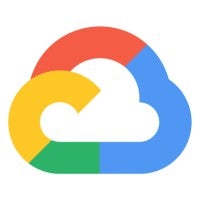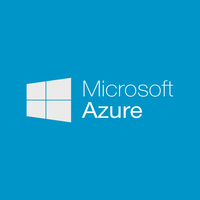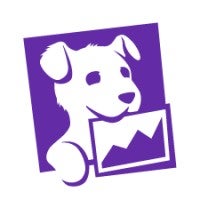The Internet of Things (IoT) has broken out from its smart home roots to become a full-fledged game changer in the worlds of cloud computing and data management. As 5G brings a dynamic level of speed and latency to network environments, the number of devices connected to these networks continues to explode, with Statista forecasting that 50 billion IoT devices will be in use globally by 2030.
Often pushed to the edge of the network to maintain optimal network performance and to enhance network security, IoT devices are great data resources that can impact business decisions. Enterprises have adopted IoT to do everything from enhancing productivity to establishing systemwide automation. As we enter Industrial Revolution 4.0 — the great merging of artificial intelligence, IoT, and smart technology to monitor and manage automated processes without human interaction — managing the billions of IoT devices currently operating on cloud networks becomes an essential part of implementing a good IoT strategy.
IoT Device Management Overview
- What is IoT Device Management?
- Benefits of IoT Device Management
- Best IoT Device Management Platforms & Software
- AWS IoT Device Management
- Cloud IoT Core
- Azure IoT Hub
- Oracle IoT Cloud Service
- Datadog
- IBM Watson IoT Platform
- Particle
What is IoT Device Management?
IoT device management is a process that consists of provisioning, authenticating, configuring, controlling, monitoring and maintaining connected devices at scale. These steps allow for administrative monitoring and management of IoT ecosystems, providing notifications to administrators who can remotely troubleshoot problems and perform systemwide tasks, such as firmware updates.
Here is how IoT device management software works:
- Provisioning or device registration adds a device to the system.
- Authentication establishes the device’s identity and ensures that it is secure and trusted in the system.
- Configuration and control of IoT devices establishes firmware attributes and security settings. This allows for remote control of devices during and after deployment, including the ability to update a device’s functionality and firmware.
- Monitoring and diagnostics provide insights into device health and send out notifications of anomalies and other network failures, allowing administrators to quickly and remotely address the problem.
- Maintenance updates connected devices as well as adjust configurations to maintain device health and network security.
Also read: Containers: Strengthening IoT Infrastructures
Benefits of IoT Device Management Software
IoT device management platforms offer comprehensive control and oversight of IoT devices — an approach that eliminates the headaches of manually and individually monitoring connected devices. In addition to enabling secure device on- and off-boarding, an essential step that permits devices to join a network and securely transmit data, IoT device management platforms offer:
- Efficient and scalable IoT deployments that streamline network monitoring and troubleshooting. For complex IoT device fleets, these platforms serve as a central hub that provide deep-level views into network traffic, device status, and data aggregation that can help diagnose network and device issues.
- Remote management of IoT device fleets. As cyberattacks grow more sophisticated, IoT device management platforms allow users to automatically deploy security updates, customize alerts that indicate network and device anomalies that portend a security breach, and offer real-time, continuous monitoring of devices to help stay on top of security issues.
- Integration with other enterprise applications and data servers using APIs and protocols such as MQTT. This allows enterprises to scale and manage their IoT ecosystems from a single panel as well adjust their IoT infrastructure to accommodate evolving business needs.
Also read: Bolstering IoT Security with Distributed Ledger Technology (DLT)
Best IoT Device Management Platforms & Software
AWS IoT Device Management
Amazon Web Service’s IoT platform takes users through the full process of IoT device management, from registration through remote management at scale. The platform is part of an ecosystem of services that makes up its IoT device management capabilities and includes:
- Fleet Hub, which helps users build standalone web applications to monitor the health of their device fleets and to aid in investigating and fixing operational and security issues.
- IoT Core to remotely manage devices connected to the cloud and other devices.
- IoT Device Defender to audit, monitor, and send alerts about fleet anomalies and then use AWS IoT Device Management to push security fixes.
Pricing: AWS IoT platform is a “pay-for-what-you-use” model, with separate billing for bulk registration, remote actions, and the number of updates and queries used for fleet indexing.
Features:
- Offers bulk registration of devices by using the IoT management console or API.
- Allows grouping of device fleets by function, security requirements, or any other user-defined category to manage access policies, view operational metrics, or perform actions on devices across the entire group.
- Offers fleet indexing and search functionality to query a group of devices and aggregate statistics on device records based on any combination of device attributes.
- Remotely push software and firmware updates to address security vulnerabilities and improve functionality using AWS FreeRTOS or AWS IoT Greengrass Core.
- Supports the creation of a device tunnel, which provides secure connectivity to individual devices and allows for the diagnosing and fixing of issues.
Cons:
- Initial set up can be complicated
- Understanding AWS IoT-specific terminology takes time
- Expensive compared to competitors
Cloud IoT Core
 Part of Google’s Cloud IoT platform, Cloud IoT Core is a fully managed IoT service that collects, processes, analyzes and visualizes IoT data in real time. Using Google’s Cloud Pub/Sub messaging service, Cloud IoT Core aggregates dispersed device data into a single global system that integrates with Google Cloud’s data analytics services. The platform runs on Google Cloud’s serverless infrastructure and automatically scales in response to real-time changes.
Part of Google’s Cloud IoT platform, Cloud IoT Core is a fully managed IoT service that collects, processes, analyzes and visualizes IoT data in real time. Using Google’s Cloud Pub/Sub messaging service, Cloud IoT Core aggregates dispersed device data into a single global system that integrates with Google Cloud’s data analytics services. The platform runs on Google Cloud’s serverless infrastructure and automatically scales in response to real-time changes.
Pricing: The platform is priced by data volume used in a calendar month. Up to 250 MB are free, with 5TB and above priced at $0.00045 per MB.
Features:
- Supports MQTT and HTTP protocols to allow connection of an existing device network.
- Securely allows individual devices to be configured and managed via a console or programmatically.
- Provides end-to-end security using asymmetric key authentication over TLS 1.2.
- Allows control of user access to devices data through the application of IAM roles to device registries.
- Offers offline operation and support for resource-constrained devices using a gateway that can perform tasks on a device’s behalf, including authenticating credentials and connecting to the internet.
- USes Stackdriver Logging with audit logs to provide insights into connection and error logs.
Cons:
- Can be expensive for small- to mid-sized businesses
- Some users have acknowledged a steep learning curve for those lacking deep IT and IoT knowledge.
Azure IoT Hub
 Part of Microsoft’s Azure ecosystem of products and services, IoT Hub is a centralized bidirectional message platform that securely communicates between IoT applications and their attached devices. Offered as a scable, full-featured device management solution, IoT Hub supports a variety of message patterns, including device-to-cloud telemetry and request-reply methods for cloud-based control.
Part of Microsoft’s Azure ecosystem of products and services, IoT Hub is a centralized bidirectional message platform that securely communicates between IoT applications and their attached devices. Offered as a scable, full-featured device management solution, IoT Hub supports a variety of message patterns, including device-to-cloud telemetry and request-reply methods for cloud-based control.
Pricing: In addition to a free edition, Azure IoT Hub has two tiers — Basic and Standard — that are broken down by usage. Basic’s first tier offers 400,000 messages for $10, while Standard’s highest tier is priced at $2,500 for 300,000,000 messages. Pricing quotes are also available.
Features:
- Takes users through the four steps of Io device management best practices including authentication and provisioning.
- Offers flexible automatic, rule-based message routing to control where hub sends device telemetry, no-code required.
- Integrates with other Azure services — Azure Event Grid, Azure Logic Apps, Azure Machine Learning, etc. — for the creation of end-to-end solutions.
- Stores, synchronizes, and queries device metadata and state information for all devices.
- Automatically responds to device-reported state change with message routing integration.
- Offers several ways to connect devices, including via Azure IoT desk SDK libraries, Azure IoT Plug and Play conventions, and custom protocols such Azure IoT Edge and Azure IoT protocol gateway.
Cons:
- Can quickly become expensive for small and medium enterprises.
Oracle IoT Cloud Service
 Oracle IoT Cloud Service manages and analyzes data generated by IoT-connected devices in real time. Allowing integration and automatic data synchronization with Oracle Business Intelligence Cloud Service, the platform provides secure, bidirectional communication between IoT devices and the cloud.
Oracle IoT Cloud Service manages and analyzes data generated by IoT-connected devices in real time. Allowing integration and automatic data synchronization with Oracle Business Intelligence Cloud Service, the platform provides secure, bidirectional communication between IoT devices and the cloud.
Pricing: Oracle’s IoT Cloud Service is part of the company’s overall Cloud Service offering. Contact Oracle for more details about enterprise pricing.
Features:
- Provides provisioning, authentication, and authorization for connected devices to ensure proof of origin of data.
- Uses cross-protocol functionality that allows end users to directly address cloud-connected devices, regardless of network protocol and firewall restrictions.
- Allows access to the platform’s data and functions from enterprise applications by using REST APIs.
- Allows the use of REST APIs to securely integrate connected devices with enterprise applications.
- Users of Oracle’s suite of IoT services enjoy cross-platform integration.
Cons:
- Integration with other tools and vendors can be complex
- Overly complicated management console
- Expensive
Datadog
 Datadog offers comprehensive IoT monitoring of device fleets, including software performance, device hardware metrics, application logs, and more via one user console. Using tags, the platform allows end users to aggregate, slice and dice, and correlate performance data across the entire Iot-connected ecosystem. Its host map also provides a high-level of the system grouped by any tag for visual comparison of by a range of metrics, including region, operating system and region. The platform promises easy setup in minutes without extensive configurations, which can then be scaled to monitor tens of thousands of devices.
Datadog offers comprehensive IoT monitoring of device fleets, including software performance, device hardware metrics, application logs, and more via one user console. Using tags, the platform allows end users to aggregate, slice and dice, and correlate performance data across the entire Iot-connected ecosystem. Its host map also provides a high-level of the system grouped by any tag for visual comparison of by a range of metrics, including region, operating system and region. The platform promises easy setup in minutes without extensive configurations, which can then be scaled to monitor tens of thousands of devices.
Pricing: Datadog offers a free trial with enterprise prices provided on request.
Features:
- Customizable alerts allow IoT managers to set triggers that reveal sustained or widespread device failures.
- The platform’s uses tags that can be user-specified to provide multiple ways and metrics to visualize, analyze and aggregate IoT data from every device.
- Uses APIs and a deep variety of telemetry libraries, allowing IoT manager and developers to collect and analyze custom business metrics throughout their IT and IoT infrastructure by adding a few lines of code.
- Can be installed on several hardware platforms, including Linux, Windows, Android, and ARM devices.
- The company’s proprietary Logging without Limits enables end users with large IoT ecosystems to cost effectively manage and monitor their logs.
- Provides data visualization of IoT devices running on managed cloud services, including Amazon IoT, Google Cloud IoT, Azure IoT Hub.
Cons:
- Users have expressed frustration with the complicated pricing scheme
- Documentation can sometimes be outdated
- Confusing user interface
- Initial setup can be difficult.
IBM Watson IoT Platform
 A fully managed, cloud-host service, IBM Watson IoT Platform provides device registration, connectivity, control, visualization and data storage. The platform leverages machine learning and cognitive APIs to deliver predictive real-time and edge analysis of user, machine, and environmental data. Dashboards and alerts gather insights and manage risks across the IoT ecosystem through high-level monitoring of devices, apps, and connections.
A fully managed, cloud-host service, IBM Watson IoT Platform provides device registration, connectivity, control, visualization and data storage. The platform leverages machine learning and cognitive APIs to deliver predictive real-time and edge analysis of user, machine, and environmental data. Dashboards and alerts gather insights and manage risks across the IoT ecosystem through high-level monitoring of devices, apps, and connections.
Pricing: IBM Watson IoT Platform offers four plans: Sensor, Consumer, Enterprise, and Industrial. Pricing is based on data usage and number of devices, but IBM provides a non-production solution that allows for exploration of how the platform could fit into your IoT plans with some limitations.
Features:
- Uses MQTT messaging protocol to to securely send IoT-connected device data to the cloud.
- The platform’s proprietary Cloudant NoSQL DB Solution provides direct access to the last 30 days’ worth of device data — which is also achievable using IBM’s Event Streams for IBM Cloud.
- Offers built-in monitoring dashboard to monitor IoT devices.
- Analyzes data using Internal and external tools, including the Analytics Service add-on that provides business end users with raw metric data using built-in configurable analytics functions.
- Includes IBM Cloud Object Storage, which offers scalable storage options and data lifecycle management.
- Monitors data usage and consumption using the platform’s dashboard, which can be customized in partnership with IBM’s IOT Solutions DevOps team.
Cons:
- Learning curve can be steep for novices
- The pricing model can be complicated and prohibitive.
Particle
 An edge-to-cloud platform, Particle offers device life management, wireless remote management, and device health monitoring. One interface provides insights into every aspect of IoT devices, including event logs, asset tracking, access control, and more. A fully managed service, Particle manages devices at every stage of development, including provisioning, prototype and development, and device management and billing.
An edge-to-cloud platform, Particle offers device life management, wireless remote management, and device health monitoring. One interface provides insights into every aspect of IoT devices, including event logs, asset tracking, access control, and more. A fully managed service, Particle manages devices at every stage of development, including provisioning, prototype and development, and device management and billing.
Pricing: Particle offers a free plan with 100k data operations per month with support for up to 100 devices. Paid tiers include the Growth plan that allows for the purchase of blocks of service and the Enterprise plan, which is priced on request.
Features:
- A comprehensive platform-as-a-service solution that provides hardware, software, and connectivity that allows users to develop IoT prototypes, scale models, and manage devices.
- Allows for rapid deployment of over-the-air (OTA) software updates, including to the entire IoT ecosystem or to targeted subsets of the fleet.
- Provides device monitoring and remote diagnostic functionality through its Health and Device Vitals Dashboards.
Cons:
- Customers have noted that documentation can be insufficient and is not issued at the same rate of development.
- Infrastructure and user interface are not intuitive, making for a difficult start.
Read next: AIOps Trends & Benefits for 2021
The post Best IoT Device Management Platforms & Software 2021 appeared first on IT Business Edge.











